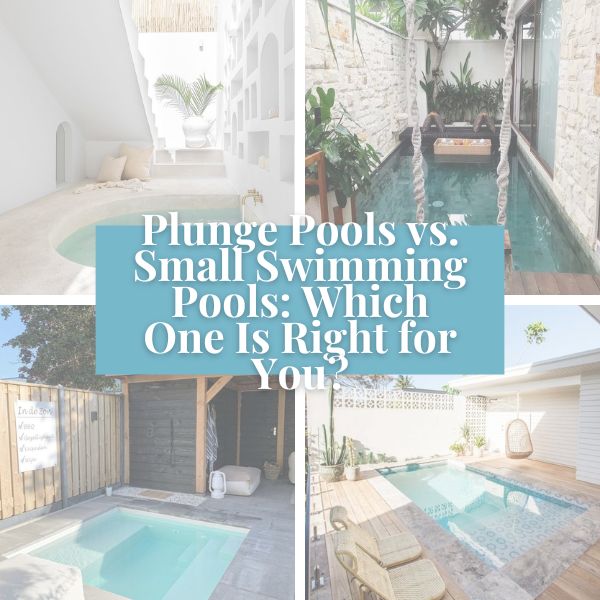Plunge pools and small swimming pools are both popular choices for homeowners who want to add a water feature to their outdoor living space. Plunge pools are typically smaller than traditional swimming pools, with a depth of around 5-7 feet and a width of 6-8 feet. They are designed for soaking and cooling off, rather than swimming laps. Plunge pools are often used as a focal point for a backyard oasis, and can be designed to complement the surrounding landscape. They are also a popular choice for homeowners with smaller yards, as they require less space than a full-sized swimming pool.
Small swimming pools, on the other hand, are designed for swimming and exercise. They are typically larger than plunge pools, with a length of around 15-20 feet and a depth of 4-6 feet. Small swimming pools can be used for lap swimming, water aerobics, and other types of aquatic exercise. They are also a popular choice for families with children, as they provide a space for fun and recreation.
Plunge Pools and Small Swimming Pools Comparations
If you’re considering adding a pool to your home, but have limited space or budget, you may be wondering whether a plunge pool or a small swimming pool is the better option. Both types of pools have their own unique benefits and drawbacks, and which one is right for you will depend on your individual preferences and needs. In this article, we’ll compare plunge pools and small swimming pools in terms of size, cost, features, and maintenance, to help you make an informed decision.
1. Size
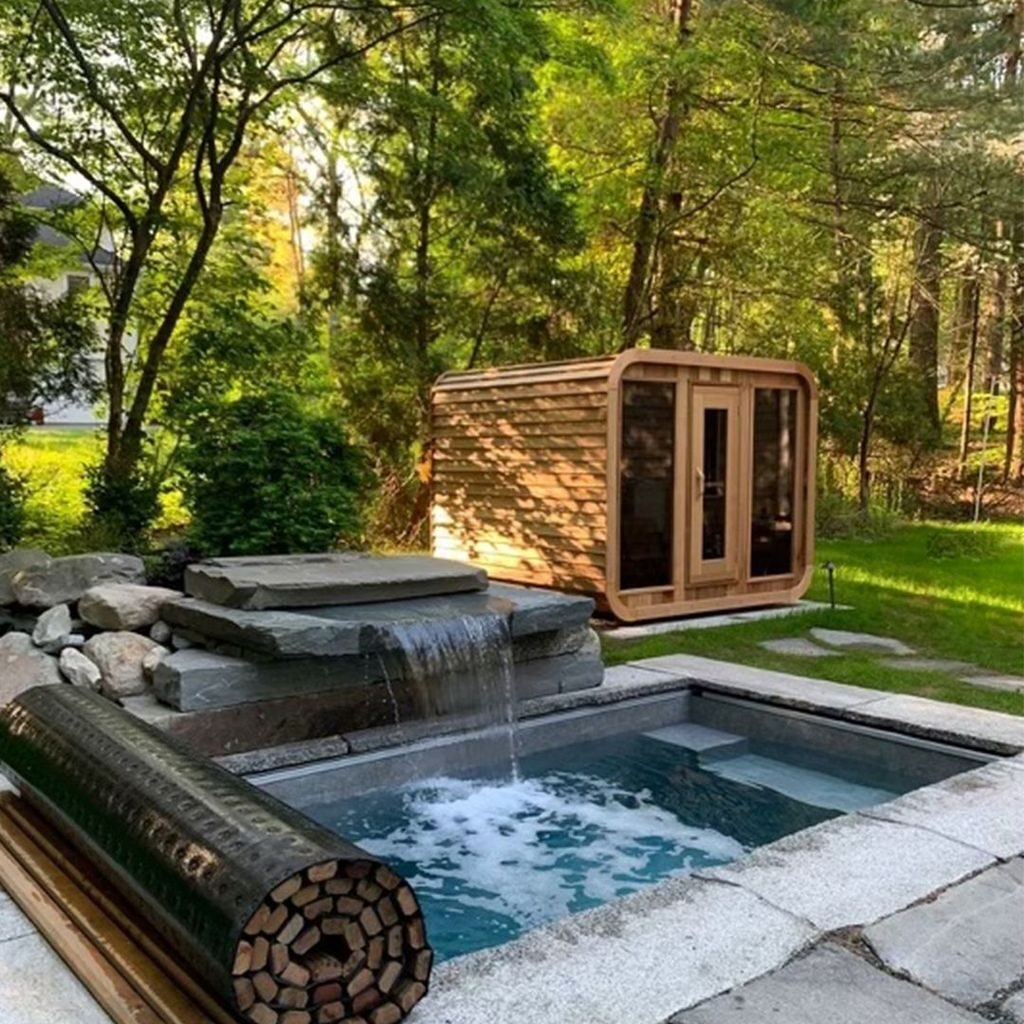
The first thing to consider when choosing between a plunge pool and a small swimming pool is size. Plunge pools are generally much smaller than traditional swimming pools, with a maximum length of around 15 feet and a width of around 7-8 feet. They are typically designed for soaking or cooling off rather than swimming laps. Outdoor plunge pool from @soakepools.
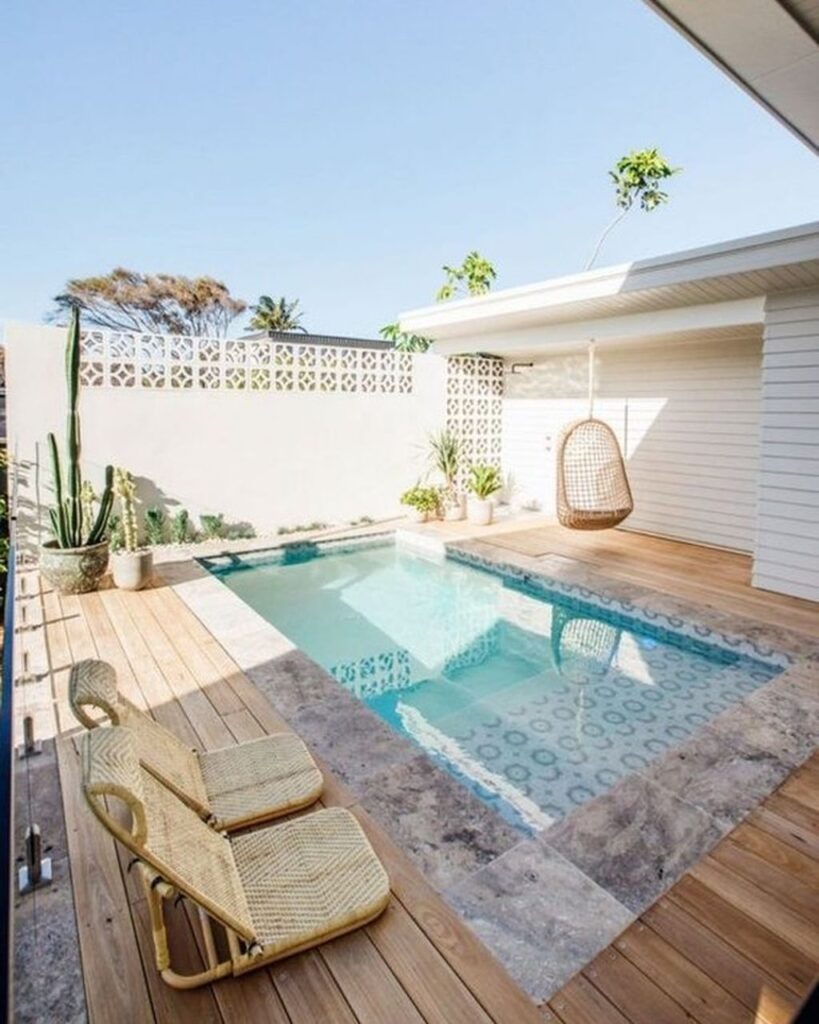
On the other hand, small swimming pools can be slightly larger, typically measuring between 15-25 feet in length and 10-12 feet in width. They are designed for swimming, but are still smaller than standard-sized swimming pools. Outdoor small swimming pool from @deco.fr.
2. Cost
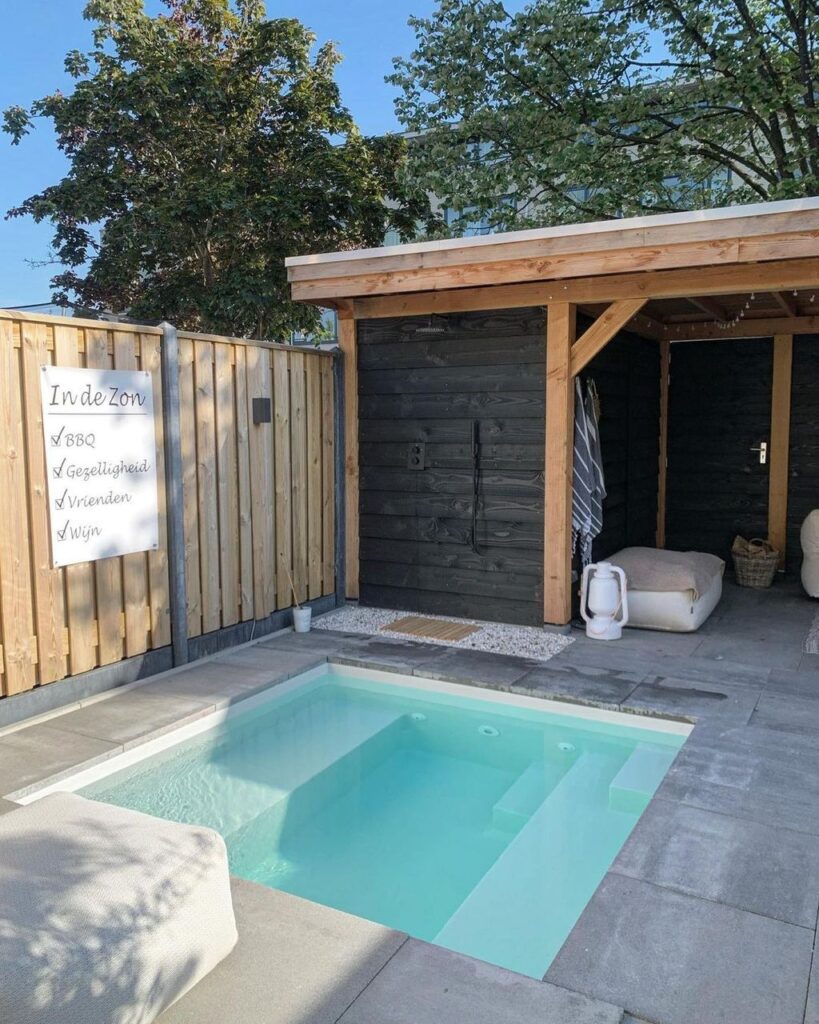
The cost is another important factor to consider when choosing between a plunge pool and a small swimming pool. Generally, plunge pools are less expensive than small swimming pools because they require less material and labor to install. They also typically have fewer features and accessories, which can further reduce the cost. Backyard plunge pool from @diana__kamp.
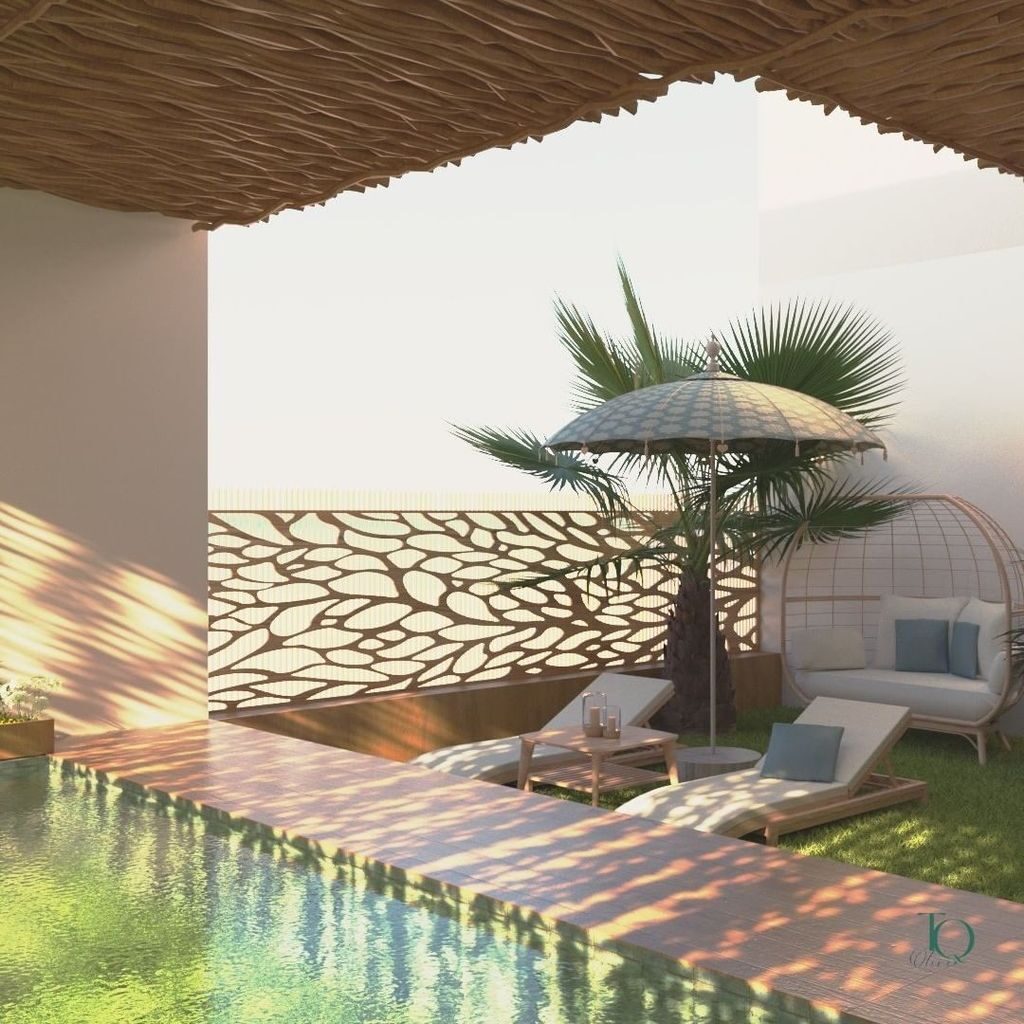
Small swimming pools, on the other hand, can be more expensive due to their larger size and additional features such as pool heaters, lighting, and waterfalls. Tropical theme small swimming pool from @oliviatq_interiordecor.
3. Features

Both plunge pools and small swimming pools can be customized with a variety of features and accessories to enhance your swimming experience. Plunge pools typically come with fewer features than small swimming pools, but they can still include options such as built-in seating, jets, and lights. Indoor plunge pool from @plungebyelite.
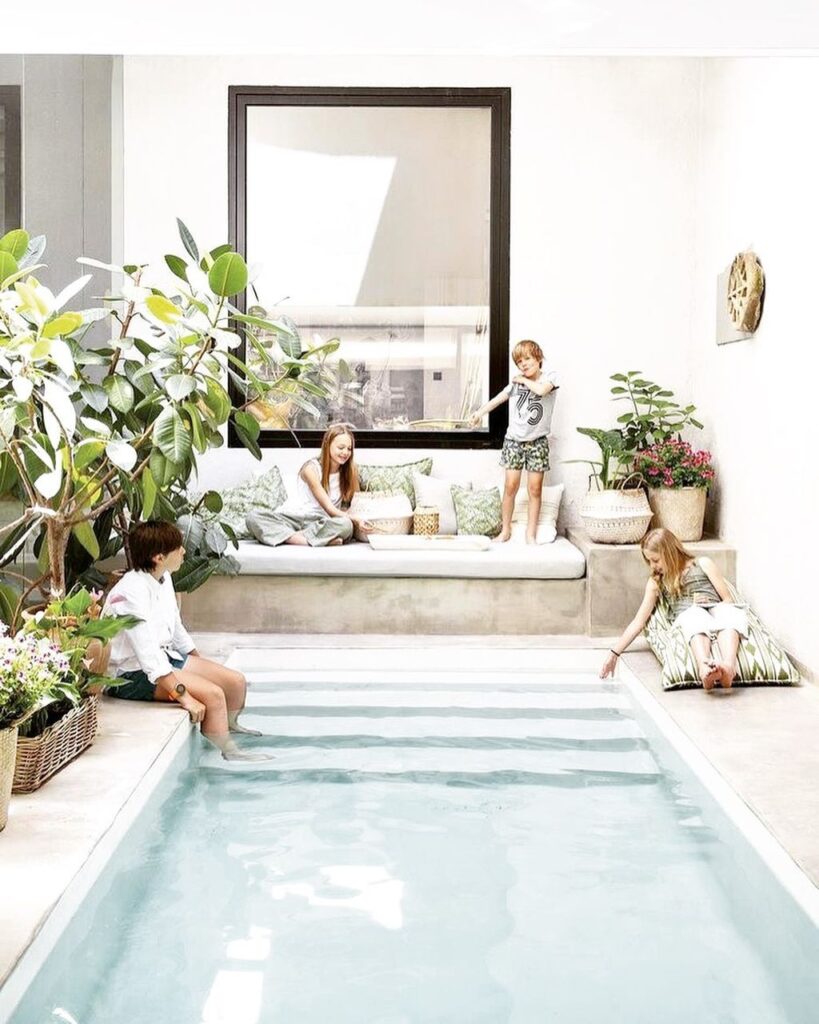
Small swimming pools, on the other hand, can have a wider range of features such as diving boards, slides, and waterfalls. Keep in mind that the more features you add, the higher the cost will be. Indoor small swimming pool design from @evyliziadesign.
4. Maintenance
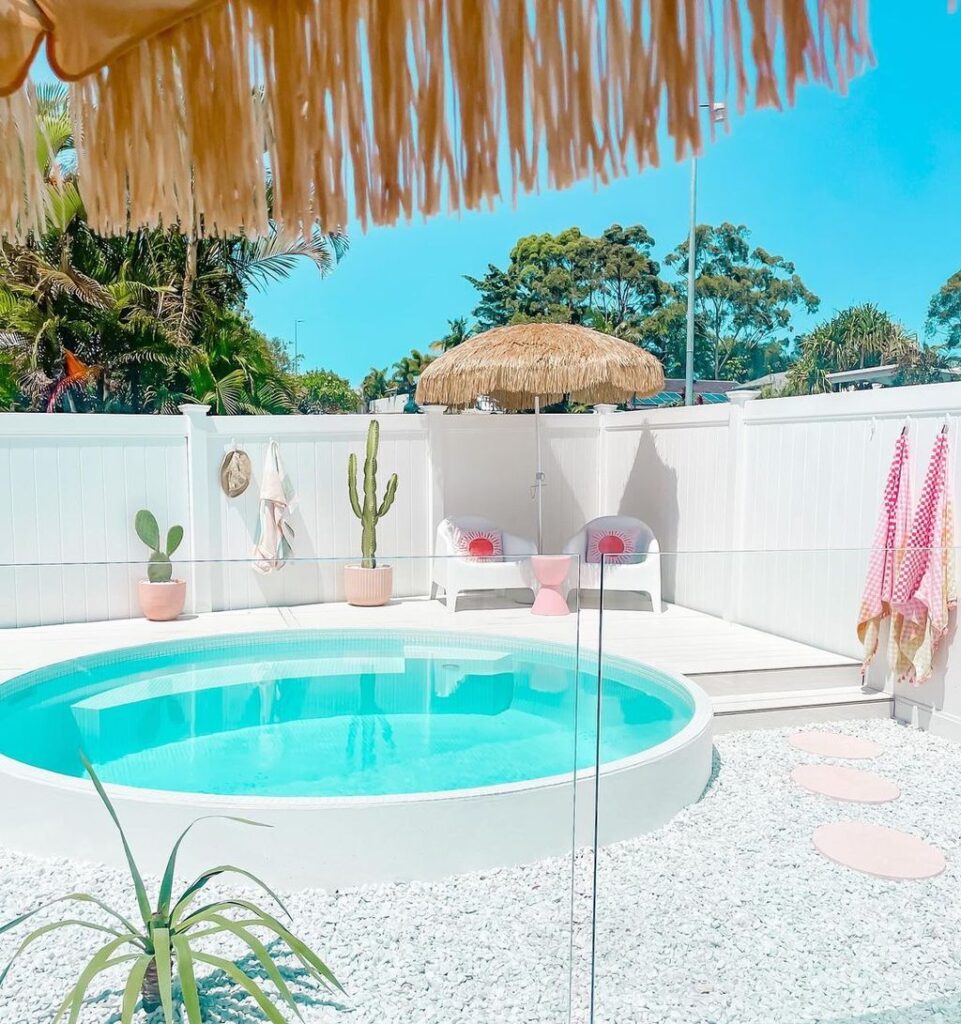
Maintenance is another important consideration when choosing between a plunge pool and a small swimming pool. Plunge pools require less maintenance than small swimming pools because they have a smaller volume of water. They also typically have fewer features and accessories that can break or malfunction. Tropical theme plunge pool from @mahiya_leather.
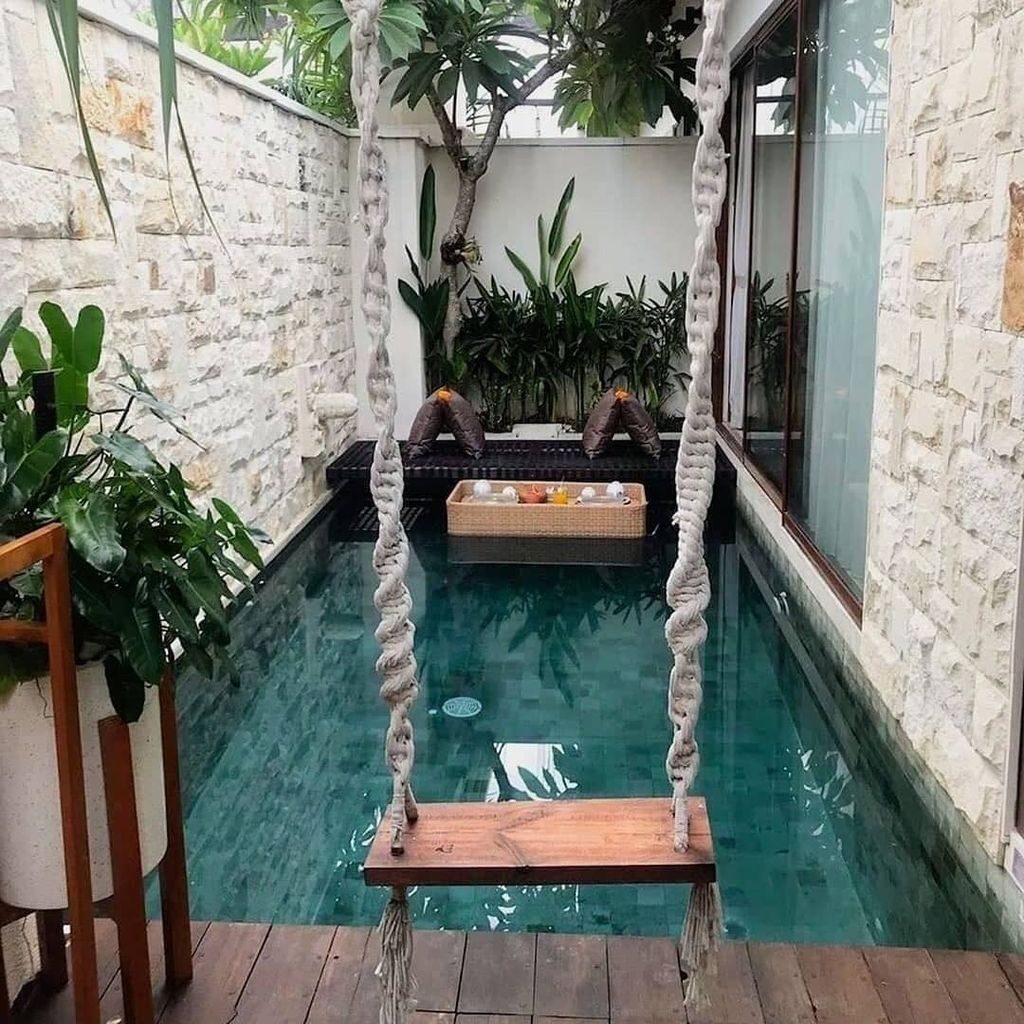
Small swimming pools, on the other hand, require more maintenance because they have a larger volume of water and more features that need to be maintained. You’ll need to clean the pool regularly, balance the chemicals, and perform routine maintenance on the pump, filter, and other equipment. Minimalist small swimming pool design from @sovabm.
5. Installation
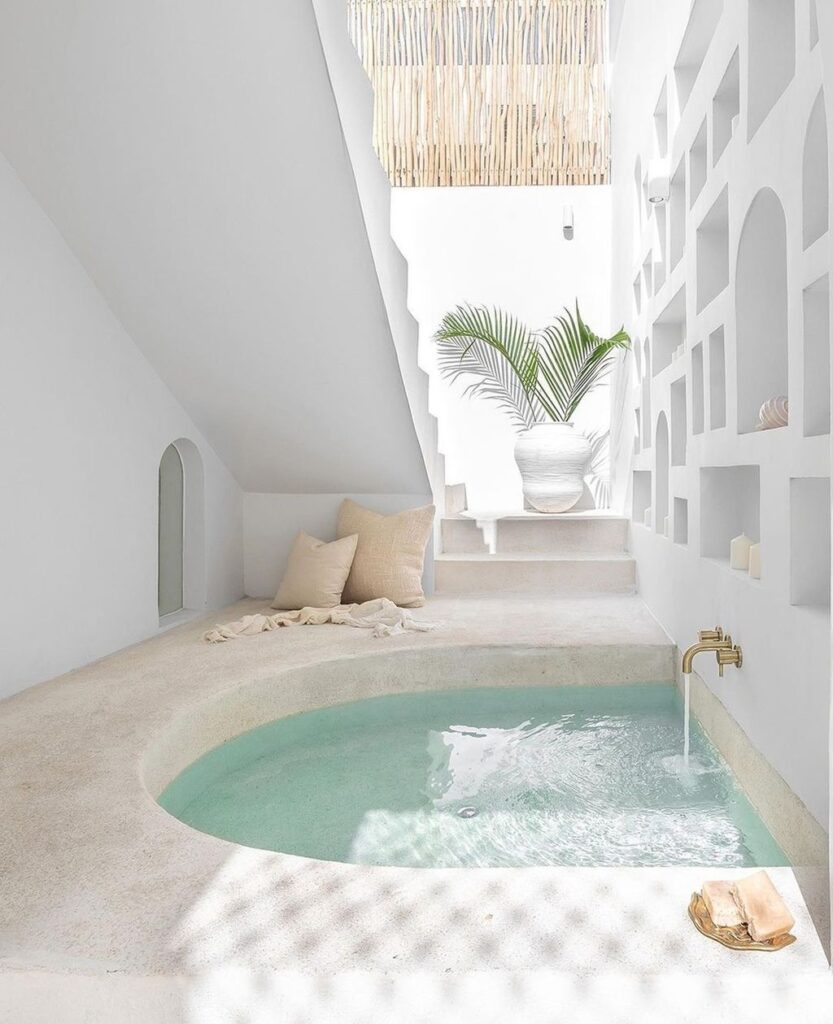
Finally, you’ll need to consider the installation process when choosing between a plunge pool and a small swimming pool. Plunge pools are typically easier and quicker to install because they require less excavation and landscaping. Beautiful plunge pool from @plungebyelite.
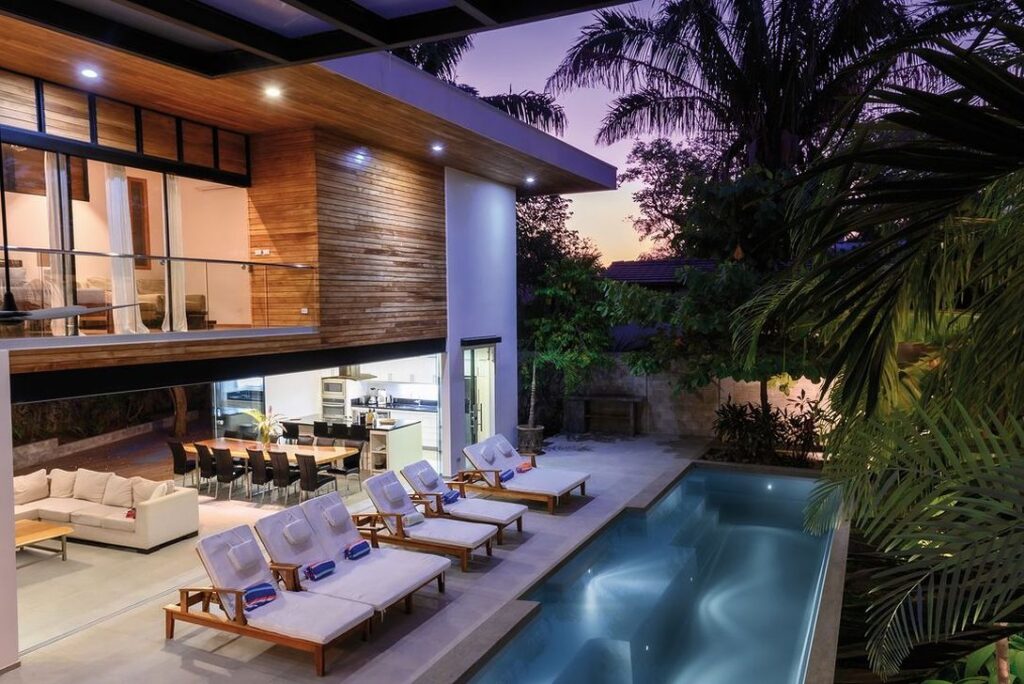
They can often be installed in just a few days, whereas small swimming pools may take several weeks or even months to install. Keep in mind that the installation process can be disruptive to your yard, so plan accordingly. Luxury small swimming pool design from @nexuspoolsglobal.
Conclusion
In conclusion, both plunge pools and small swimming pools can be great options for homeowners who want to add a pool to their property but have limited space or budget. Ultimately, the choice between the two will depend on your individual needs and preferences. If you’re looking for a pool primarily for soaking or cooling off and want a lower-cost, low-maintenance option, a plunge pool may be the best choice. If you want a pool primarily for swimming and are willing to invest more money and time into maintenance and installation, a small swimming pool may be the better option.
FAQs
- Are plunge pools more energy-efficient than small swimming pools?
- Yes, because they have a smaller volume of water to heat and maintain.
- Can you use a plunge pool for exercise?
- While plunge pools are primarily designed for soaking and cooling off, they can also be used for light exercise such as water aerobics.
- What is the average lifespan of a plunge pool or small swimming pool?
- With proper maintenance, both types of pools can last for many years. The lifespan will depend on factors such as the quality of the materials used, the level of maintenance, and the climate.
- Can you add features and accessories to a plunge pool or small swimming pool after it’s been installed?
- Yes, both types of pools can be customized with a variety of features and accessories even after they’ve been installed. Keep in mind that adding features can increase the cost and maintenance requirements.
- Can a plunge pool or small swimming pool increase the value of your home?
- Yes, adding a pool to your home can increase its value, especially in areas with warm climates where outdoor living is popular. However, the increase in value will depend on factors such as the quality of the pool, the location of the home, and the local real estate market.
